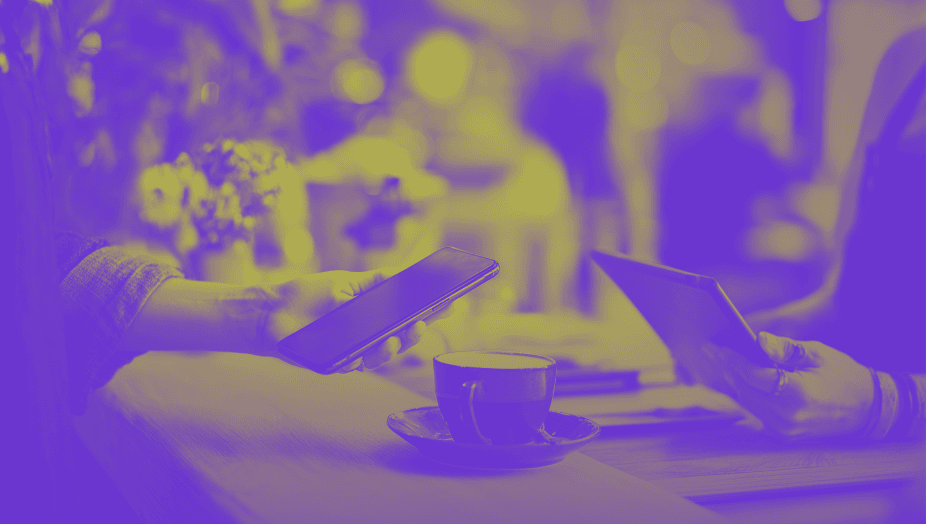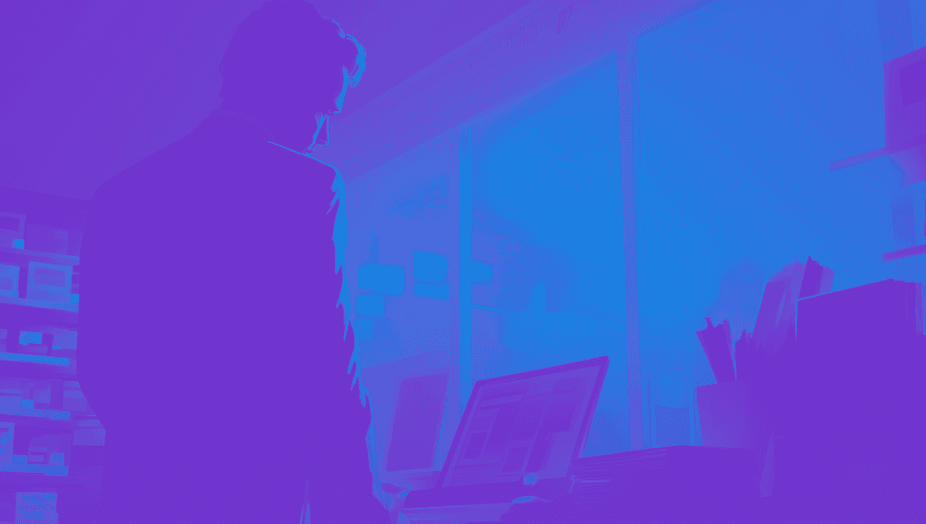
QR codes seem to be everywhere these days, from gym treadmills to pet-food products. And it’s no wonder. The little 2D squares are made up of a complex matrix pattern that can store a stack of useful information that’s instantly accessible via smartphones.
As fintech and the digital payment landscape continues evolving, QR codes have become a worthy addition to contactless payment solutions. In fact, QR code payments now account for 25% of all mobile payment transactions globally.
With faster payments, lower fees, no equipment required and an ultra-easy setup process, you’re probably wondering what’s the downsides? In this article we’re looking at the pros and cons of QR code payments and demonstrating how your business can benefit from implementing this easy contactless solution.
What are QR code payments?
QR code payments are a type of digital payment that is initiated by scanning a QR code with a smartphone camera. After scanning, users are directed to a secure payment page where they can authorise the transaction.
How do QR code payments work?
QR codes are the user-friendly interface, but the Payment Service Provider (PSP) behind the QR code determines how they work and the payment process. QR code payment methods include:
- Debit and credit cards: Customers manually enter their card details on the payment page, like they would when using any other web-check out page.
- Digital Wallets: Users are directed to their digital wallet, such as Apple Pay of Google Pay to authorise the transaction.
- Payment apps: After scanning, users check out via their payment app such as PayPal or Revolut.
- Open banking: Users authorise the transaction directly from their banking app.
Some QR code payment solutions involve merchants scanning customers QR codes at their point-of-sales system (POS) to identify card information.
Most commonly though, merchants create QR codes for customers to scan. For example, at Noda these can be dynamic, static or merchant controlled. In dynamic codes, the information such as payment amount can be altered after the code is generated – this enables customers to enter the amount before paying. Static codes contain fixed information, like pre-set prices (e.g. £10, £20, £50) that can be accessed an unlimited number of times. For merchant-controlled QR codes, the business sets the amount directly before generating.
Accepting payments via QR code takes just a few simple steps:
- Merchants generate QR codes using their payment app or dashboard.
- Customers scan the code and enter the payment amount (or this can be pre-entered by the merchant).
- The payment is authorised via the associated payment method, with merchants receiving a payment notification.
Pros of QR code payments
There are numerous advantages of QR code payments for both merchant and customer:
QR code payment benefits for customers:
- User-Friendly Interface: Straightforward and intuitive interface, that modern consumers are already familiar with, making it easy to complete transactions.
- Cashless and Contactless: QR code payments promote a touch-free checkout – great during flu season.
- Quick and Convenient: No cash, no cards, no wallet needed. Just scan, pay and go directly from a smartphone. Ideal for spontaneous purchases.
QR code payment benefits for businesses:
- No Hardware Required: Depending in the payment provider, QR codes typically don’t require any hardware or POS terminals, significantly reducing setup and maintenance costs.
- Bypasses Expensive Card Networks: When used with open banking, QR code payments bypass traditional card networks, resulting in lower transaction fees and instant payments.
- Versatile: QR codes can be displayed on stands, printed materials and mobile/tablet screens to accept instant in-person payments. Alternatively, they can be used online for e-commerce checkout or shared via email/SMS/live chats.
- Portable: UK businesses can take their QR codes anywhere, from farmers markets to house calls to tradeshows.
- Secure: QR code payments typically use encryption, strong customer authentication (SCA) and multi-factor authentication (including biometrics, PINs and passwords), reducing the risk of fraud and chargebacks.
- Easy to Generate: Generally, it takes just a few simple steps to generate QR codes for payments. Noda clients can have their codes ready to use in seconds.
Cons of QR code payments
While the list of QR code payment advantages far outweighs the ‘cons’ list, there are some potential downsides of using QR codes:
- Slow settlement: QR code payments methods linked to credit and debit cards can often have the same processing time as card settlements, which can be days.
- Dependency on Smartphones: If a customer’s phone is out of battery or they have network issues, they won’t be able to make a payment.
- Excludes Cash Users: Some customers still prefer to pay with cash. Relying solely on QR code payments may alienate these customers.
The benefits of open banking QR code payments
Open banking is the most efficient QR code payment method available. It enables direct bank transfers, so merchants receive funds instantly. Paying via banking apps completely bypasses expensive card network costs and fees.
Open banking also offers enhanced security through SCA and multi-factor authentication, with the additional layer of banking level security.
How Noda’s QR code payments help businesses
- Simple onboarding with no setup costs: Sign up and start using QR code payments with a day, with no hardware or technical skills required.
- Instant Payments: Direct account-to-account payments, with instant notification to your Noda dashboard.
- Low Transaction Fees: Fixed fee of just £0.20 per transaction in the UK, with no monthly fees, and no expensive card networks and percentage-based transaction fees.
- Easy Integration: Noda’s QR codes work as a stand-alone payment solution or can be integrated into your existing systems.
Get your QR code payments started today
QR code payments are a modern, easy and secure way to handle transactions for both businesses and customers. While there are some minor drawbacks, comparing QR code payment advantages and disadvantages demonstrates that QR codes, especially when combined with open banking, make a compelling option for businesses looking to upgrade how they get paid.
Ready to implement QR code payments in your business? Speak to the Noda team today and bring the conveniency of QR codes to your business.
FAQs
Why are QR payments popular?
QR payments are popular because they’re simple, fast, and cheap — for everyone. Customers just scan and pay with their smartphones. For merchants, there’s no terminals, no cards, no fiddling, plus QR payments cut out the middlemen, i.e. the card networks and their expensive fees and costs.
Hence why QR codes are taking off and you can now pay using QR codes across cafés, salons, markets, and online shops alike.
Are QR code payments better than card payments?
In many cases, yes. QR payments are typically cheaper, quicker to settle (often instant in the UK), and don’t require hardware. There’s also no card network involved, which means fewer fees, fewer failed payments and less card-related fraud, such as card skimming.
Cards aren’t going anywhere yet, but QR codes are offering a smarter alternative that’s becoming more widespread.
Are QR code payments secure?
Yes — especially when powered by open banking. Customers authorise payments via their bank app, using strong customer authentication like biometrics or passcodes. There’s no card data to steal, and no storing of sensitive info. It’s also much harder for fraudsters to pull off chargeback scams.
The level of security depends on the QR code payment app though, such as the technology they use, their compliance with regulations and their checkout process.
Why use QR code payments?
They’re a faster, cheaper, and more secure way to get paid. Whether you’re running a busy café, selling online, or collecting invoices, QR payments streamline the process and keep your costs down. No clunky terminals, no hidden fees — just clean, quick transactions via card or digital wallets, or instant, account-to-account payments when powered by open banking platforms like Noda.
Latest from Noda

GoCardless Review 2025: What Merchants Need to Know

Alternative Payment Methods UK: Your Complete Guide to Modern Payment Solutions

Plaid Review for Merchants: Data, Payments, Pros & Cons, and More


